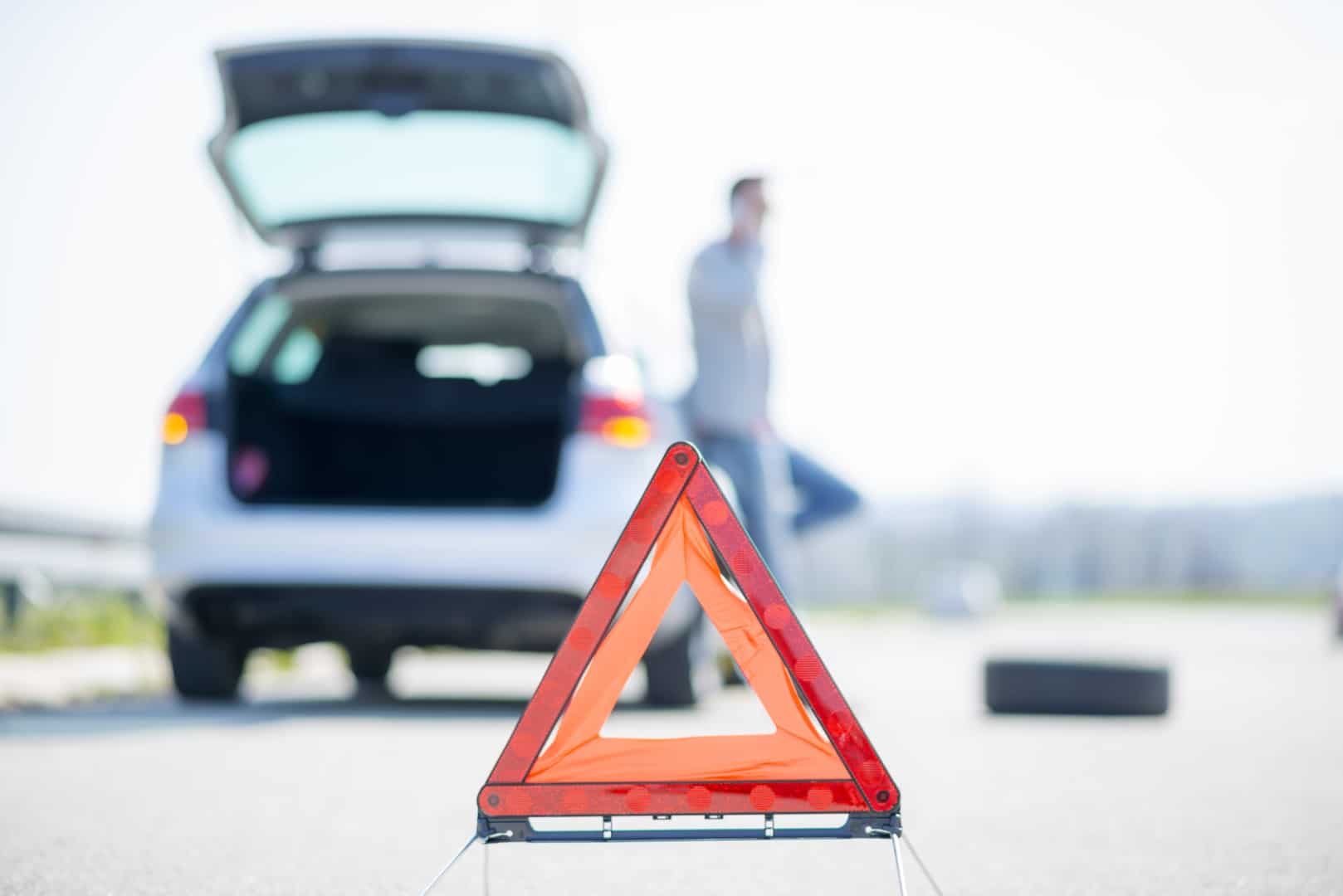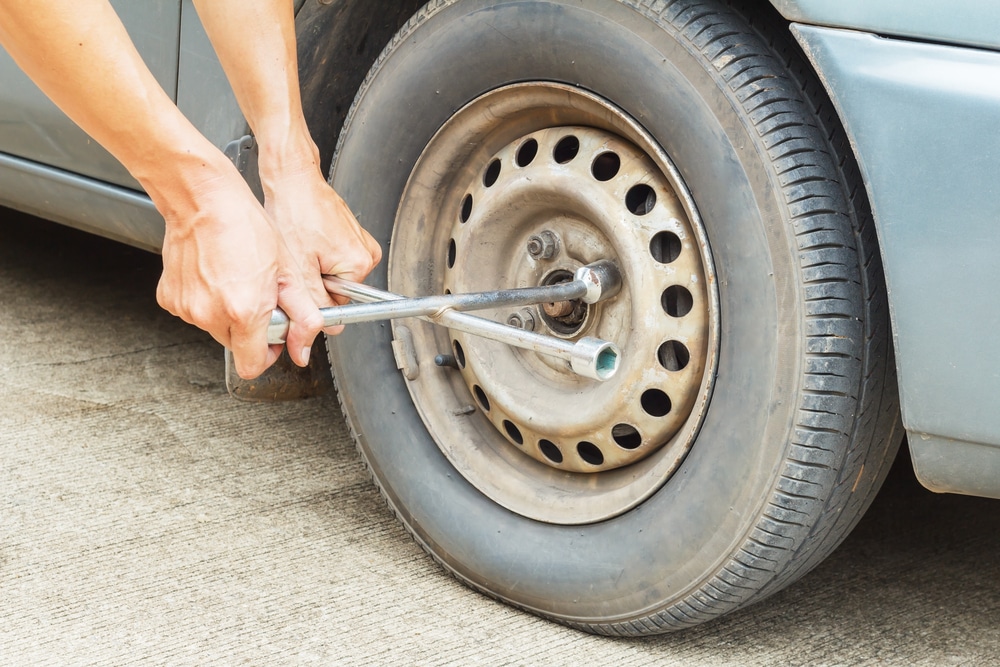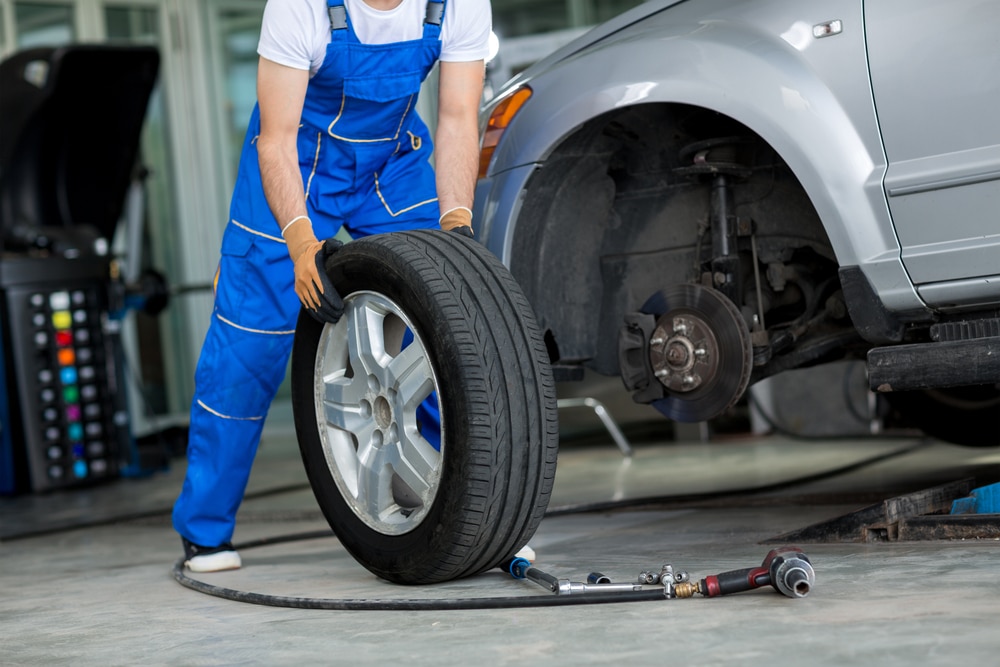Change a Flat Tire ALL BY YOURSELF – Part Two

Need a refresh on the tools needed to change a flat tire? Part one of this two part series has you covered. Now, let’s move forward in learning how to physically change your tire.
1. Do your part to limit surrounding danger.
The most important part of the tire change process is to find a safe location to perform the tasks ahead. By finding a spot off the side of the road, you are not only protecting yourself, but every other driver who may be traveling nearby. Alert vehicles that you are stopped by placing your reflective triangles in front and behind your vehicle and turn on your emergency flashing lights. Put your parking break on as an extra safety measure to keep your vehicle from rolling. If you don’t have wheel wedges in your car, you can find two large stones or wooden logs to place behind or in front of your tires. Put your wedges opposite from the flat tire to keep it from rolling, (if your back tire is flat, place the wedges in front of your front tires.)

2. Remove the Flat tire.
The first thing to do in this step is loosen the lug nuts. You may need to remove your hubcap by using the flat end of your lug wrench. Turn the lug nuts to the left about 1/2 a turn, but do not remove them completely until later. Place the car jack under your vehicle. Most car manuals tell specifically where the jack should be placed, so take a look at what your owners manual recommends for placement when fixing your tires. Raise your car about 6 inches and if you have something for extra security you can place a wood beam underneath the car for added support. Once secured and lifted, remove the lug nuts completely and take off your flat tire.

3. Change your flat to your spare.
Line up your spare tire so it sets into the bolts. Once you have placed the spare tire onto the bolts, tighten the lug nuts as tight as you can with your hands or lightly turn the nuts with the wrench to keep the tire in place. Lower the vehicle so the tire can touch the ground and tighten the nuts again until they seem as tight as possible. Once you complete these steps, lower the vehicle entirely and give the nuts one more tightening to make sure they wont fail you during your drive to safety.

4. Clean up and find a mechanic.
If you have a hubcap or wheel covering that fits on your spare tire, replace it and tighten it completely. If it doesn’t fit, just store it with your flat tire in the trunk or backseat of your vehicle. Stow away all your tools and double check so you don’t leave anything behind. Check your tire pressure before driving away if you haven’t in a while and then set off to find a mechanic who can replace your spare with a new quality tire.

5. Don’t drive long distances until you get your tire fixed by a professional.
Look around for your best options when getting new tires and stay safe out there on the road!
If we missed anything or if you have a story to tell about having to change a flat tire, send us a message on facebook (@VirtualDrive) or instagram (@virtualdrivetx). Also, check out our pintrest page (Virtual Drive of Texas) with blog posts, ideas to spice up your vehicle, great places to drive for vacations, and more!

